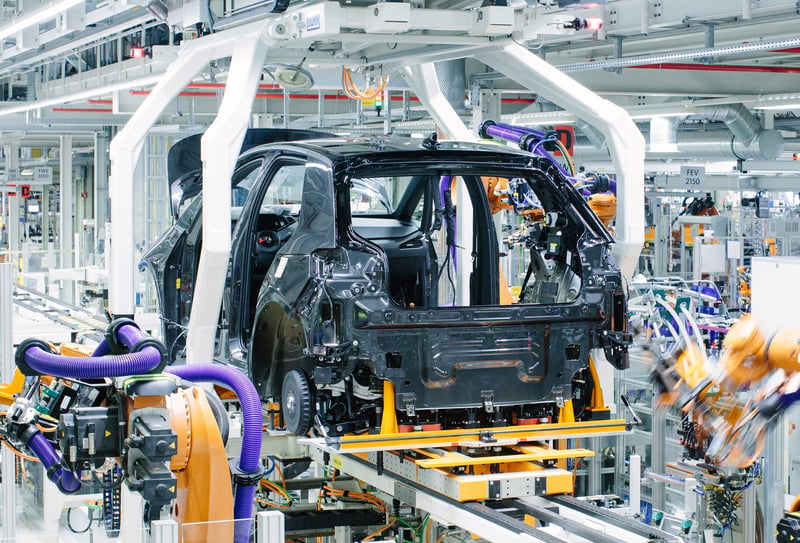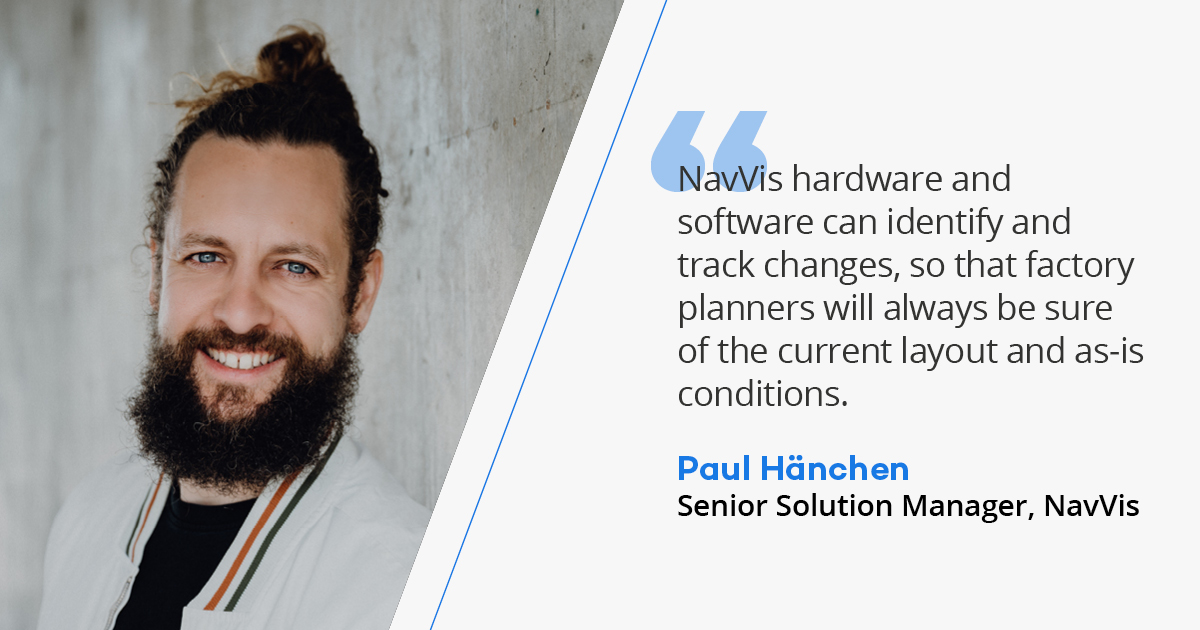Curious about how factory planning is achieved in modern car manufacturing? Paul Hänchen, Senior Solution Manager, Digital Factory, explains current practices and how to improve them.
When you move into a new house, it’s likely that the first thing you do is stand in the middle of the living room and work out where all the furniture is going to go.
You need to consider sightlines to the television set, access to bookshelves, and ensure there are clear paths around the coffee table to the sofa.
You will probably try out a few different layouts. If you are the organised type, you may have bought some graph paper and sketched out a few ideas.
Factory layout planners do not have such a luxury. There’s no time for trial runs. Considerable financial resources have been invested into manufacturing equipment and facilities, and it is vital that the factory begins repaying that investment and making profits as soon as possible.
Saving costs in car manufacturing, minimizing production downtime
Factory planning is a long-term project, likely to have begun some years before construction and installation begin.
Paul Hänchen is a Senior Solution Manager at NavVis with a focus on the Digital Factory. With extensive experience from working at Audi, Huawei and Webasto, he says that typically the planning period in the automotive sector is around three years. To complicate matters, he adds, planning is most often applied to a brownfield site: manufacturers seek to add production lines inside an existing factory rather than build the entire facility from scratch.
In the automotive industry, it is common for multiple models to be built on a single production line, and the task of the factory planner is to make this process as seamless as possible.
“To keep the investment low, it is good to use the existing infrastructure and machinery,” he says. "But sometimes it is smarter to install modern machines and use automation or robots because the technology can help make the process better. You have to keep the balance between new investments and stable processes.”
Hänchen continues: “In the brownfield situation you take the existing layout and try to adapt it as best you can with as few changes as possible. The operators know what they must do, the machines are all running at a steady pace, and you don’t want to change the system you have in place. This all saves money and minimizes interruptions.”
The best way to arrange this is to add the new production onto a line producing a similar product to the one which is to be added; in the automotive sector, for example, this would mean looking for a line producing a car with a similar wheelbase to the new model, or one which uses common components.
This would mean that the stations for assembling the wheels of both models could occupy the same space, and the mechanisms used to transport components to the production line and the operator stations would be the same.
 Copyright: Volkswagen
Copyright: Volkswagen
Integrating two production processes onto the same line
Hänchen cites an example of how one Volkswagen factory produces the ultracompact UP model and the very large Touareg SUV on the same line. However, differences occur even with similar car models and in this case the ideal solution is to be flexible – now more than ever because the volume of products and customization options are increasing all the time.
“Flexibility in the layout planning is important, so sometimes you try to make the machinery in the planning for product A more flexible because you know that there will come a product B, even if you do not have the exact information,” Hänchen explains.
Integrating two production processes onto the same line can be challenging, Hänchen said, and maintaining a balance between the two is paramount. Ideally, there would be detailed CAD (computer-aided design) files of the existing facilities, and these are usually available for very highly automated production stages.
But in less automated facilities – for example, car assembly – much of the work may be done by operators doing manual or semi-automated tasks using automated tools such as screwdrivers or handling machinery.
In these cases, according to Hänchen, it is unusual to have the full line depicted in CAD, as it would not have been built in a fully bespoke manner; some machinery would have come from outside suppliers, for example. The basis of the planning is to work from drawings or to visit.
“You will have meetings with relevant departments from planning, operations, logistics and maintenance to understand the current situation and discuss how to implement the new product,” he says. “Especially if you have the responsibility for factories globally, the communication and coordination is important. These activities are often combined with many business trips over a longer period.”
The overall goal is to implement a new product in an existing or new factory. “The KPIs (key performance indicators) on the way are investment, cycle time, ergonomics and space usage,” Hänchen explains.

Making factory planning more effective with mobile mapping
Reality capture and mobile mapping systems offer a way for factory planners to be certain of the layout of an existing factory and the precise position of all its equipment, and Hänchen notes that it makes this stage of the process far easier.
Even when CAD files exist, problems can occur, Hänchen points out. Greenfield sites planned from scratch will have the full documentation, but after the implementation things will often change because staff are conducting continuous improvement exercises as a matter of routine.
“Maybe a robot was not working, and the replacement had to be put in a slightly different position,” he says. “A plant manager will be challenged to cut cycle times and reduce costs, so they will always do internal optimizations. It’s not common that large machines are moved, but there are often many small changes. In my experience, because the documentation of these changes is difficult to maintain, they are rarely added to the original CAD and layout files.”
“NavVis hardware and software can help to identify and track these changes,” Hänchen concludes, “so that factory planners will always be sure of the current layout and as-is conditions.”
“This won’t just help to smoothen the process of layout planning in a technical way. It will also help to understand the needs and demands of all partner departments – e.g., operations, maintenance, and logistics – to work closely and efficiently together in the current project.”
In this way, NavVis technology fosters a new cooperation model for factory planning on the interpersonal level, paving the way for many more successful projects in the future.
Would you like to learn more about the NavVis Digital Factory Solution? Contact us for more information, or download a copy of our free guide to getting started with your digital factory implementation.
Stuart Nathan is a London-based freelance science writer, formerly features editor for The Engineer. He has written for publications including The Economist 1843, Ingenia and MIT Technology Review. He believes that without good communication, the full potential of science and technology cannot be realised.

